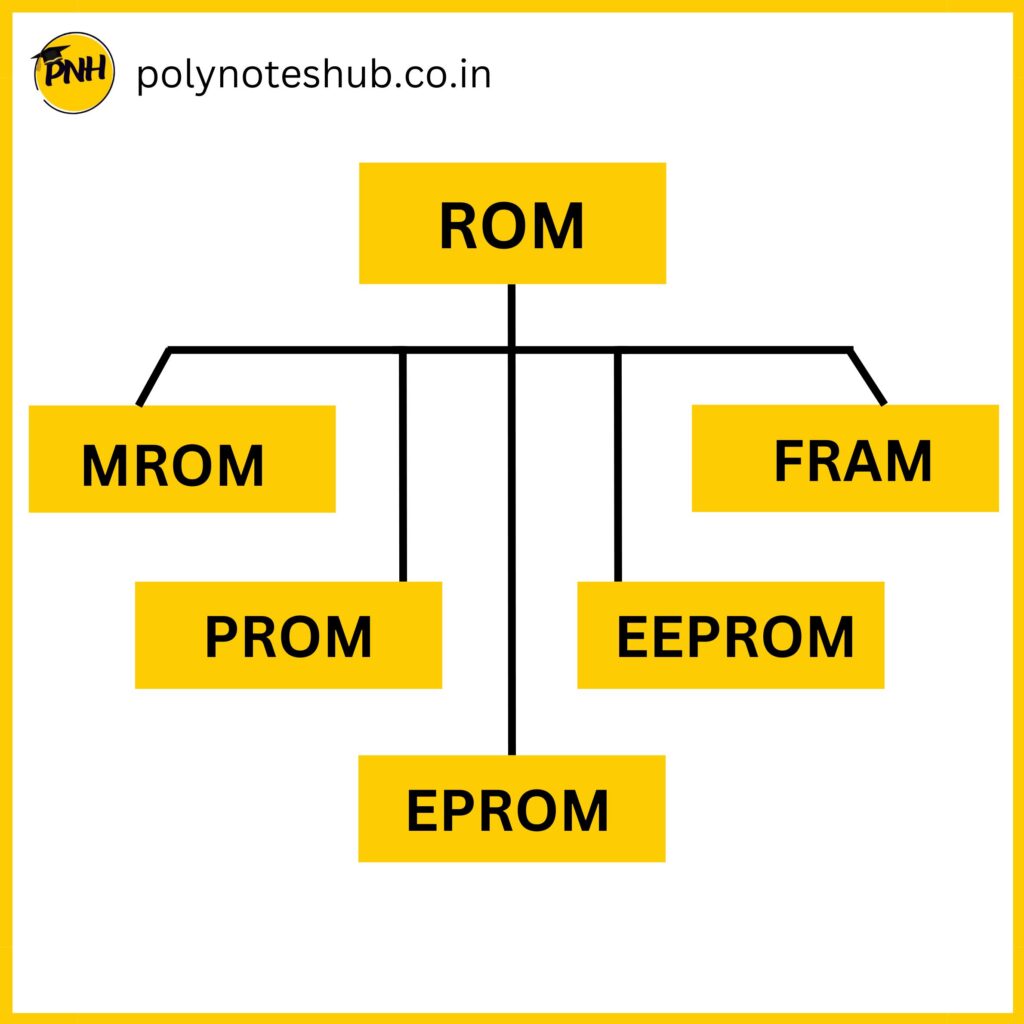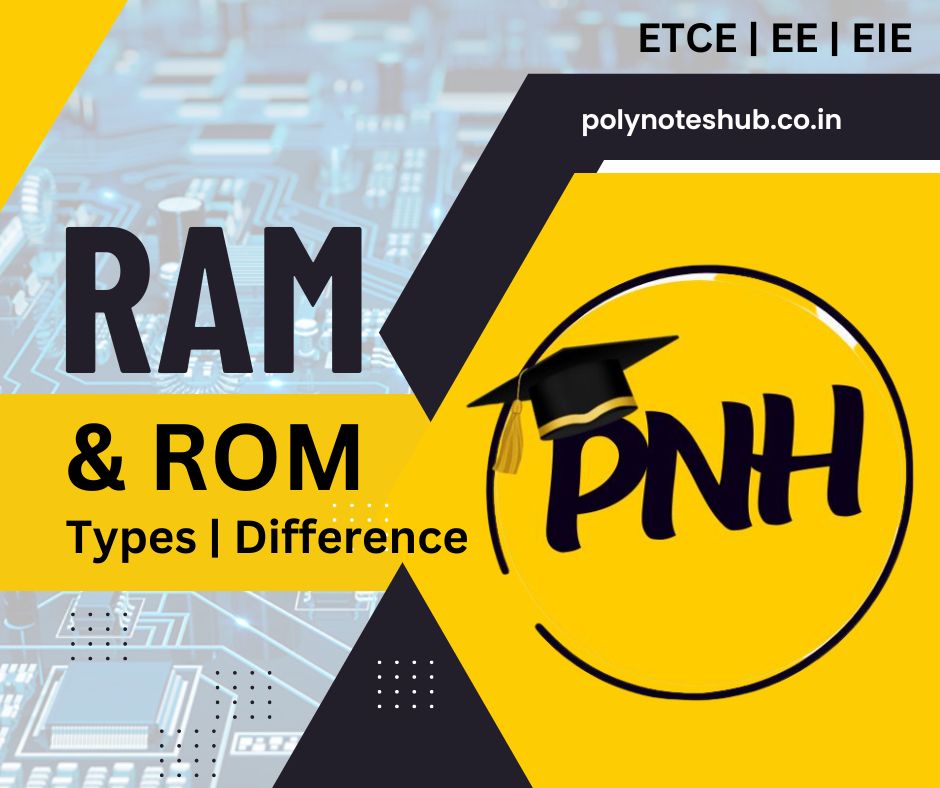What is RAM?
RAM, or Random Access Memory, is a type of computer memory that serves as a temporary storage area for data and instructions that the computer’s central processing unit (CPU) can quickly access. Unlike permanent storage devices like hard drives or solid-state drives, RAM is volatile memory, meaning that its contents are erased when the computer is powered off.
RAM plays a crucial role in the performance of a computer system. When you run applications or perform tasks on your computer, the CPU loads the relevant data and instructions into RAM for quick access. This enables faster processing speeds compared to fetching data directly from non-volatile storage devices, which are slower. The more RAM a computer has, the more data it can store for immediate processing, leading to smoother multitasking and better overall system performance.
Types of RAM
There are Two types of RAM

SRAM (Static RAM)
SRAM uses flip-flops to store data, making it faster and more reliable than DRAM. It doesn’t require constant refreshing, but it is more expensive and consumes more power.
DRAM (Dynamic RAM)
This is the most common type of RAM. DRAM is less power consumption RAM. It stores data as electrical charges in capacitors within integrated circuits. However, these charges leak over time, requiring constant refreshing of the memory cells to maintain data integrity.
SRAM Vs DRAM
| SRAM | DRAM |
|---|---|
| 1. It is flip flop based. | 1. It is capacitor based. |
| 2. Low density but high speed. | 2. High density but low speed. |
| 3. Power consumption is more. | 3. Power consumption is less. |
| 4. Doesn’t need refreshing. | 4. Needs refreshing. |
Application of RAM
RAM is used for temporary data storage during active tasks. It’s crucial for running applications, multitasking, and overall system performance. The more RAM a computer has the smoother and more efficient its operation.
What is ROM?
ROM, or Read-Only Memory, is a type of computer memory that stores permanent data and instructions essential for a computer’s or electronic device’s functioning. Unlike RAM (Random Access Memory), which is volatile and loses its contents when the power is turned off, ROM retains its data even when the device is not powered.
The data stored in ROM is usually programmed during the manufacturing process and cannot be easily modified or erased by typical computer operations. This characteristic makes ROM suitable for storing critical firmware, boot-up instructions, and other permanent software that is required for the device’s basic operations.
Types of ROM
There are Five types of ROM

MROM
The full form of MROM is Mask Read Only Memory. It is inexpensive and is the very first ROM which is hard wired device that contains a pre-programmed set of data or instruction.
PROM
The full form of PROM is Programmable Read Only Memory. PROM is a type of ROM that is manufactured blank and can be programmed with data after purchase. Unlike mask ROM, PROM doesn’t require specialized manufacturing processes for each different piece of data. However, once programmed, the data cannot be changed or erased.
EPROM
It is called Erasable Programmable Read Only Memory. EPROM is a type of ROM that allows data to be erased and reprogrammed using ultraviolet (UV) light exposure. The memory cells are made using a floating-gate transistor that can trap electrical charges. To erase the data, the entire EPROM chip is exposed to UV light, which resets the memory cells to their default state. After erasing, the chip can be reprogrammed with new data. EPROMs are often used for firmware updates.
EEPROM
It is called Electrically Erasable Programmable ROM. EEPROM is similar to EPROM but can be erased and reprogrammed electronically using specific voltage levels. This makes it more flexible than EPROM, as it doesn’t require UV light exposure for erasing. EEPROMs are used for storing small amounts of data that need to be updated or modified relatively frequently, such as configuration settings or calibration data.
Flash Memory
Flash memory is a type of EEPROM that allows for multiple memory cells to be erased or programmed simultaneously in blocks. It’s commonly used for mass storage devices like USB drives, memory cards, and solid-state drives (SSDs). Flash memory is known for its non-volatile nature and faster read and write speeds compared to traditional disk drives.
EPROM Vs EEPROM
| EPROM | EEPROM |
|---|---|
| 1. After erasing, can be reprogrammed. | 1. Can be reprogrammed multiple times. |
| 2. Requires physical UV light exposure. | 2. Erased electronically using specific voltages. |
| 3. Limited due to UV erasing. | 3. More reusable due to electronic erasing. |
| 4. Relatively slower. | 4. Relatively faster. |
Application of ROM
ROM is used for storing essential firmware, such as the BIOS of a computer, which initializes hardware during startup. It’s also used in devices like microcontrollers, where permanent instructions need to be stored.
RAM Vs ROM
| RAM | ROM |
|---|---|
| 1. It can do both, Read and Write. | 1. It is only can do Read. |
| 2. It is volatile memory. | 2. It is a nonvolatile memory. |
| 3. Used for temporary storage. | 3. Used for permanent storage. |
| 4. Costlier than ROM. | 4. Cheaper than RAM. |
| 5. Can be static and dynamic. | 5. Can be MROM, EPROM, EEPROM, PROM etc. |
Posted To:
Show your Love at !
You can check also:
- Architecture of 8051 Microcontroller
- Pin Diagram of 8051 Microcontroller
- What is 8085 Microprocessor | Pin Diagram | Applications.
- Architecture of 8085 Microprocessor
- 8085 Microprocessor vs 8051 Microcontroller

